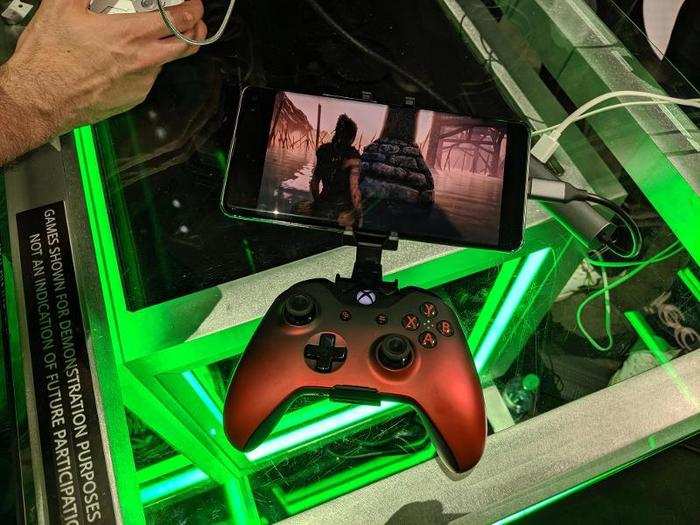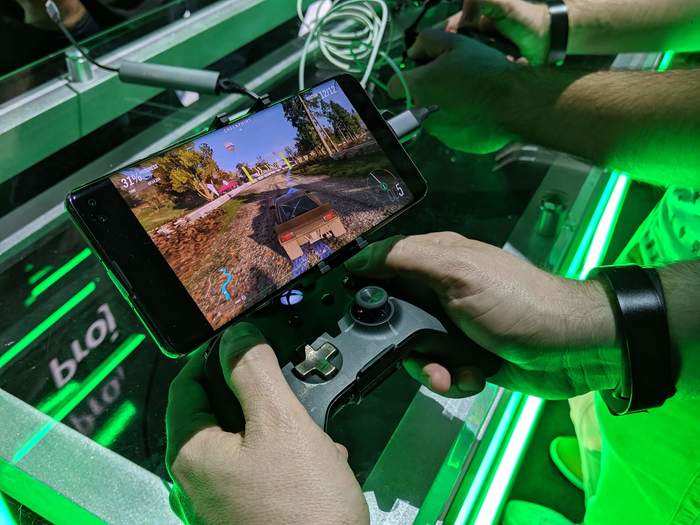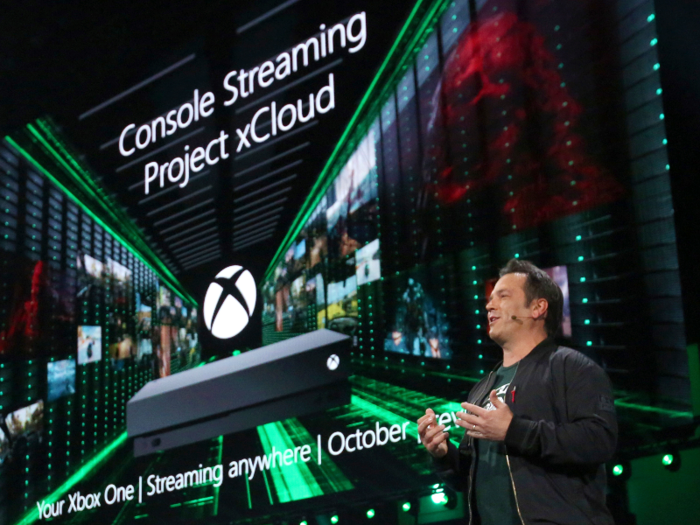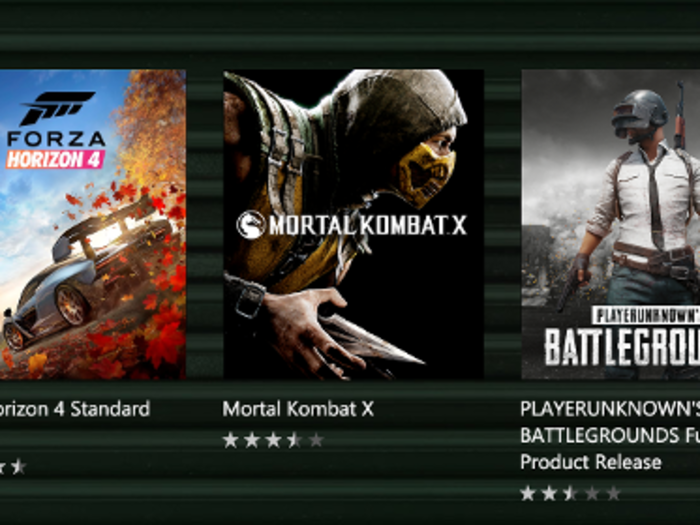- Home
- slideshows
- miscellaneous
- I got to try Microsoft's version of the 'Netflix of gaming,' and I'm still not convinced it's the future of video games - here's why
I got to try Microsoft's version of the 'Netflix of gaming,' and I'm still not convinced it's the future of video games - here's why
First and foremost: What is Project xCloud?

Here's what I got to try:

Microsoft's Xbox group had dozens of video game kiosks set up inside Microsoft Theater earlier this month, but one glowing green table was full of smartphones that were curiously attached to Xbox One gamepads.
As it turns out, these also had games running — albeit games that were being streamed from a remote server to these smartphones attached to Xbox One gamepads. Each of the controllers was powering a different game, and I was able to try out a few.
Overall, the experience of using an Xbox One gamepad and playing games streamed to the smartphone screen was perfectly fine. It worked.
As you might expect, the experience was shrunken down due to the smartphone's screen size. Additionally, it was a bit weird to hold a gamepad attached to a smartphone — it's a far-from-standard way of playing a video game.
But in general, the experience was fine. Not great, not bad — just fine. There was, however, one major issue: input lag.
Video games played over a stream are still far from perfect.

It's relatively simple for Netflix or YouTube to stream video data to your television, smartphone, laptop, PC, or whatever other device.
If you have a stable internet connection, even if you're on a smartphone, you can probably stream video. Occasionally it might need to buffer, or maybe it'll drop in resolution in an attempt to mitigate buffering, but those stutters aren't such a big deal if you're just watching an episode of "The Office" idly during your lunch break.
Those stutters matter much more if you're playing a game, and can mean the difference between it being playable and unplayable in some cases.
Such is the case with Project xCloud. I pushed a button, and a beat later the action would happen in whatever game I was playing.
In the case of "Forza," I had to react a moment earlier to upcoming turns so that I could account for that input lag. It was noticeable enough that, if I were playing "Forza," this would get me to stop and wait until I could play it on hardware that could power the game locally.
For a racing game like "Forza," the lag was enough to make it unplayable.
In another game I played, a third-person character action game named "Hellblade: Senua's Sacrifice," the lag was less noticeable. This wasn't a measure of the lag not being present, but due to the style of game that "Hellblade" is: a slower-paced, less reactionary action and exploration game.
For a third-person action game like "Hellblade," Project xCloud was fine — good enough that I'd use it to play the game, whether at home or remotely.
Any number of factors could've impacted my experience during this demo, and it's entirely possible that the experience on stable, high-speed home internet would be much better for any type of game.
You'll be able to try for yourself later this year...sort of.

This October, Microsoft is releasing the first version of Project xCloud, and it costs nothing.
But rather than stream video games from a cloud server somewhere, you'll stream them from your already existing Xbox One game console. It's not quite the promise of Project xCloud, but it's an early taste of the full-fledged streaming service that's still expected to enter beta in 2019.
It's not clear when that beta will go live or how it will work, but it will be free to try.
When the fully streamed version of Project xCloud goes live, it will cost something and will likely come with a Netflix-style library.

For a monthly fee, Netflix offers subscribers an instant library of content. Some of that content is produced by Netflix, and some isn't. You don't need to download any of the content — it just streams directly to your device.
To date, no one has created something directly comparable in gaming. There are a few services that offer streamed video games, but those services charge an extra fee for each game. Microsoft offers an instant library-type service called Game Pass, but each of the games on that service must be downloaded to your console before playing.
Project xCloud may be the first to actually deliver a subscription-based video game streaming service with an instant library, À la Netflix.
"I want it to be about choice, but I do think the strength that we've already seen in the last two years with Game Pass is an important component of this," Xbox leader Phil Spencer said when we asked him about the business model for xCloud earlier this month.
"There's paying for access, and then there's paying for a library of games," he said. "And the Game Pass component is really critical, because you want to have access to hundreds of games that you can go play. That is more your Netflix-type example."
What seems most likely is that Microsoft offers some combination of its Game Pass subscription tied to its upcoming game streaming service.
Spencer wouldn't go into details just yet, but he did offer a tease: "When you look at other options out there, that library of content that's available is such a critical thing. We have decades of working with partners to bring that together as an industry."
All of which is to say one thing: Project xCloud is likely to include an instant library of games to play via stream.
Popular Right Now
Popular Keywords
Advertisement